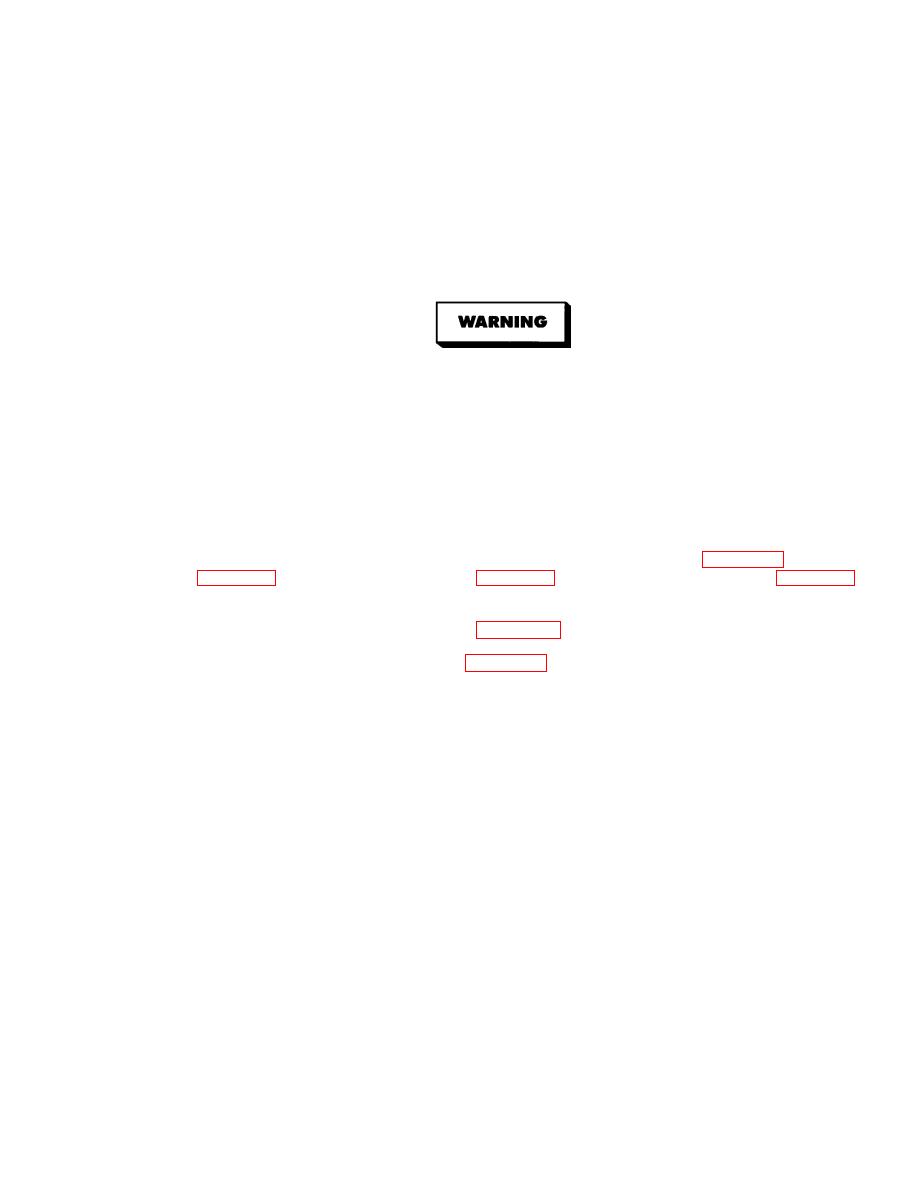 |
|||
|
|
|||
|
|
|||
| ||||||||||
|
|
 TM 9-3990-206-14&P
c. Inspection of Installed Parts. Perform inspection with the item in its normal installed position/condition,
considering accessibility and visibility of the item being inspected. The purpose of the inspection is to determine if the
item is damaged or incomplete to the extent that it should be replaced/repaired.
(1)
Inspect for loose, missing, or damaged parts.
(2)
Inspect parts for dents, holes, worn spots, scratches, marred finish, cracks, rust and corrosion.
(3)
Look for loose or chipped paint, rust or gaps where parts are welded together. If a bad weld is found,
notify the supervisor.
Drycleaning Solvent (P-D-680) is TOXIC and flammable. Wear protective goggles, face
shield, and gloves; use only in a well-ventilated area; avoid contact with skin, eyes, and
clothes, and do not breathe vapors. Keep away from heat or flame. Never smoke when
using solvent; the flashpoint for Type II Drycleaning Solvent is 140 degrees F (60 degrees C)
and Type III Drycleaning Solvent is 200 degrees F (93 degrees C). Failure to do so may
result in injury or death to personnel.
If personnel become dizzy while using cleaning solvent, immediately get fresh air and
medical help. If solvent contacts skin or clothes, flush with cold water. If solvent contacts
eyes, immediately flush eyes with water and get immediate medical attention.
d. Cleaning. Remove buildup of dirt and rust by wiping with an abrasive paper (Item 10, Appendix E). Use a
cloth (Item 4, Appendix E) or wire scratch brush (Item 1, Appendix I) and drycleaning solvent (Item 14, Appendix E)
to clean metal parts. Allow to dry.
e.
f.
g. Painting. Refer to FM 20-3, Camouflage Pattern Painting; and TB 43-0209, Color Marking and Camouflage
Painting of Military Vehicles, Construction Equipment and Material Handling Equipment.
Lubrication. Lubrication instructions are contained in the maintenance procedures.
h.
Assembly. Assembly instructions contain all necessary sealing, torquing and lockwiring procedures.
i.
Installation. Installation instructions include procedures for checking alignment and adjustment of items.
j.
Adjustment. Make adjustments to the flatrack or components as needed before operation of the system.
k.
l. Placing in Service. These instructions include any final servicing, checks, calibration and operation checks
not previously covered that may be required for an assembly, component, or end item.
4-7
|
|
Privacy Statement - Press Release - Copyright Information. - Contact Us |